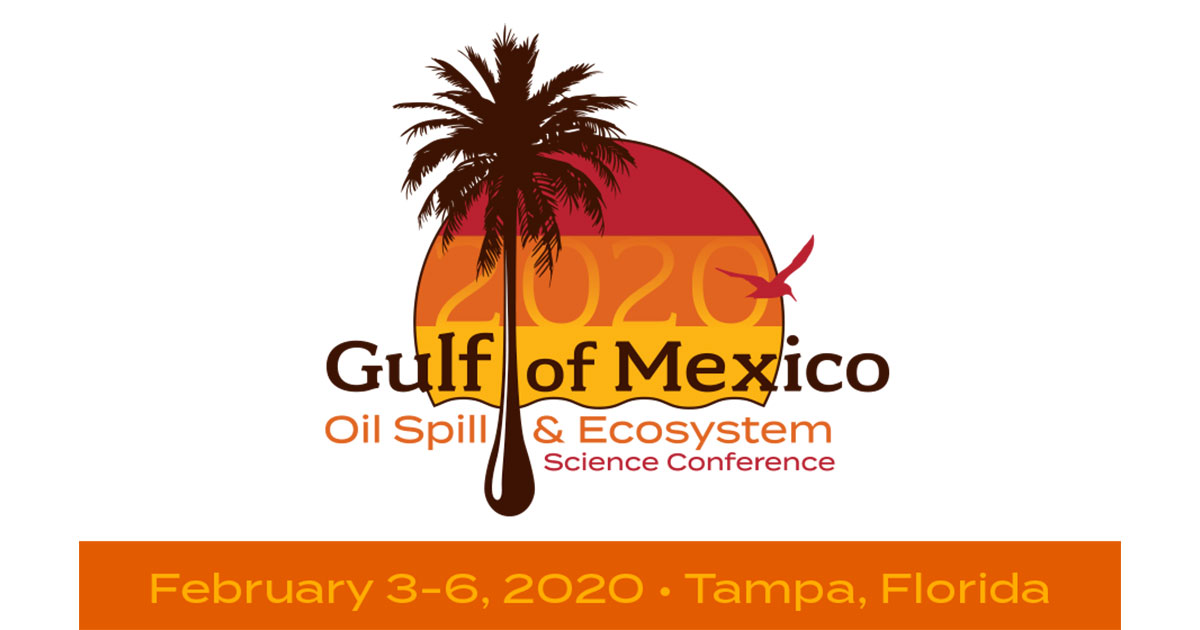The Gulf of Mexico Oil Spill & Ecosystem Science Conference

2020 marks the 10-year anniversary of the Deepwater Horizon (DWH) disaster and is an important milestone for scientific research in the Gulf of Mexico. The culmination of a decade of dedicated research has increased our knowledge of marine oil spill science, Gulf ecosystems, and the impacts of the spill on those ecosystems and communities.
Join scientists at the eighth annual GoMOSES conference February 3-6, 2020, in Tampa, Florida, as they discuss what we have learned during this decade of research and what we still need to discover. The conference, organized by a diverse group of partners, will bring together hundreds of experts from academia; local, state and federal agencies; nongovernmental organizations; and industry.
Kicking off the conference will be an opening plenary featuring the chair of the Gulf of Mexico Research Initiative Research Board, Dr. Rita Colwell, followed by 28 scientific sessions with over 425 presentations to discuss the latest oil spill and ecosystem scientific discoveries, innovations, technologies, and policies. For more information view the online program.
Many of the presentations at the conference focus on the integration of research into oil spill and resource management practices. A few examples include:
- Remote Sensing Techniques for Oil Spill Monitoring and Storm Damage Assessment in an Operational Context
F. M. Monaldo, University of Maryland, College Park, MD
While impossible for a single ship to patrol the entire Gulf to identify a spill as it occurs, a satellite can easily monitor the large area. The authors will discuss new tools using satellites to detect areas with spilled oil and provide oil thickness estimates. Incorporating these tools into NOAA’s oil spill response tool kit will help with rapid situational assessment and optimize deployment of rescue and oil remediation. - Comparative Risk Assessment of Response Alternatives for the Deepwater Horizon Spill
D. French-McCay, RPS Ocean Science, South Kingstown, RI
The DWH oil spill was unique both in the scale and depth of dispersant application, spurring research and discussion of the impacts of dispersants and best practices for future spills. This talk presents a new Comparative Risk Assessment tool that provides a cost benefit analysis of response alternatives on different components of the Gulf ecosystem and their associated values to a diverse set of stakeholders. The goal of simulating these response alternatives for the DWH spill is to help inform decision-making processes for future disasters. - Synthesis of Sea Turtle Dive Patterns in the Gulf of Mexico: Getting to Abundance Through Aerial Correction Factors
K.M. Hart, National Park Service, Corpus Christi, TX
The Gulf is home to several species of sea turtles, including the endangered loggerhead and green sea turtles, as well as the critically endangered Kemp’s ridley sea turtle. Due to the lack of baseline data of sea turtle distribution and behavior in the Gulf of Mexico, it was unclear at the time of the DWH oil spill what the impact of the spill would be on these animals. New satellite survey data of tagged sea turtles enable the combination of diving depths with surfacing locations to provide insights into sea turtle behavior, filling a critical gap in understanding for any future incidents. - Using Hopanes and Steranes for Assessment of Petroleum Contamination in Marine Invertebrates
H.M. Hamontree, University of South Florida, St. Petersburg, FL
One of the main concerns when examining the impact of an oil spill on marine life is understanding how oil is integrated into the organisms themselves. Though advances have been made in the identification of oil “fingerprints” in sediments and tar balls, researchers have thus far been unable to identify the source of oil in an organism’s tissues. In this study, scientists were able to successfully identify similar oil source indicators in animal tissues. Using these new insights into biomarkers, researchers were able to successfully identify levels of MC252 contamination from the DWH oil spill in tissue samples from deep-pelagic shrimp collected from the Gulf of Mexico after the spill. Not only does this research provide insight into marine invertebrate oil exposure, but also the transfer of these chemicals through the food web.
GoMOSES is made possible by the generous support of many organizations.
For more information, visit the conference website.

